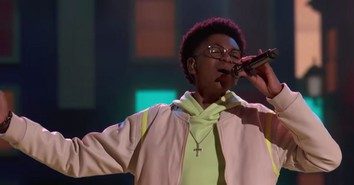"The Alamo" - Movie Review

Release Date: April 9, 2004
Rating: PG-13 (for sustained intense battle sequences)
Genre: Action/Drama/Adventure
Run Time: 137 minutes
Director: John Lee Hancock
Actors: Dennis Quaid, Billy Bob Thornton, Jason Patric, Patrick Wilson, Emilio Echevarria, Jordi Malla,
It’s March of 1836 and a ragtag group of men are surrounded by 2,000 Mexicans led by the “Napoleon of the West.” Two legends – Davy Crockett (Billy Bob Thornton) and James Bowie (Jason Patric) – are under the command of a 26-year-old colonel, having been abandoned by General Sam Houston (Dennis Quaid). The run-down mission where they are camped out provides little in the way of cover, and as most everyone knows, their defense is doomed. After days of waiting, the Mexicans attack, killing all 186 people inside.
The best-known version of this film starred John Wayne and was made in 1960. This production is an entirely new script by the director of “The Rookie.” It suffered production problems, with Ron Howard abdicating directorship for producer, and Russell Crowe bailing out. The budget was also slashed and the original film, which played for more than three hours, was cut to just over two.
OBJECTIONABLE CONTENT: "The Alamo" | |
• = Mild •• = Average ••• = Heavy •••• = Extreme | |
Adult Themes: | ••• |
Drugs/Alcohol Content: | ••• |
Language/Profanity: | •• |
Sexual Content/Nudity: | •• |
Violence: | ••• |
One conservative group reacted to the film’s script, issuing a press release prior to screenings that attacked Disney for “desecrating American heroes.” Disney has a tendency to rewrite history in its movies, but in this case, the accusations are largely unfounded. Neither I nor my husband and father, both amateur historians, found much remiss in the film’s account. In fact, the film took a difficult event – weeks of waiting followed by a short massacre – and brought the characters to life. Although it does not rise to epic status and will leave viewers confused about why the battle was actually fought (and why Houston did not send help), it’s an entertaining movie with little objectionable content for families of older children.
One inaccuracy: Crockett died in battle, not on his knees, afterwards. This scene appears to be more about artistic license than any “desecration” of Crockett’s legacy, however. Crockett fights valiantly until the end. Then, when given a chance to surrender, he defies the general, instead offering the Mexicans terms of surrender. This bravado, while historically unsubstantiated, in no way attacks Crockett’s reputation. On the contrary: it serves as a fictional but excellent illustration of the men’s defiant hubris and patriotism. This was the story of the West.
Crockett recounts a ruthless massacre of Natives, but this is right in line with the savage slaughter perpetrated against them. And his speech about wanting to “drop over the wall” made him human – not cowardly. Both Patric and Thornton do excellent jobs with their roles, bringing great depth to their legendary characters.
Colonel William Barret Travis, commander of the Texan forces at the Alamo, is portrayed as an adulterer. His diaries describe many visits to prostitutes. And Bowie had a definite reputation for land swindling as well as knife-wielding. In fact, it wasn’t uncommon for land-grabbers to burn down entire courthouses – in order to destroy real estate records. Even Bowie’s death, which happened when he was stabbed to death by a phalanx of Mexican soldiers (after shooting two from his deathbed), was accurate. He was sick with viral pneumonia when the fighting began. So there was no revisionist history here.
Equally, Sam Houston is portrayed as a drunkard (although not with venereal disease, as the press release stated). He was known for his drinking. On the other hand, Santa Anna is not at all portrayed as a “flawless, noble, and brave hero.” The general is represented as a decadent, merciless leader with little regard for the lives of his men or the counsel of his officers. Worse still, he forcibly beds a teenage maiden – hardly noble. (The scene is implied, with him closing the bedroom door.)
Were the Americans heroes? That is up for debate. They fought for what they wanted and in the end, gave their lives for that cause. Houston was smart enough to not only win the Battle of San Jacinto several weeks later (which began the belated cry of “Remember the Alamo!”) but also barter Santa Anna’s life for Texas. But the “cause” these men were fighting for was land, not liberty. And it belonged to the Mexican government. Those who had the least to lose – the criminals, the debtors, the fortune hunters and the land speculators – were the ones who went after it. Unlike the Puritans, who came to the colonies for freedom, those who fought for Texas were seeking prosperity, not purity.
Manifest Destiny is hardly a biblical concept. Did we have more right to the land than the Native Americans, the Mexicans or the French? And can we claim righteousness for the treaty breaking (every one we ever made with the Indians), the indiscriminate wildlife destruction, the biological warfare (typhus-infected blankets) and the wholesale genocidal massacre we committed to fulfill that “destiny?”
“They are not soldiers, but pirates,” sniffs Santa Anna. Yes, they had guts – lots of ‘em. But heroes? That’s your call. In the meantime, with a little background research, “The Alamo” will be an entertaining evening.
Originally published April 12, 2004.







